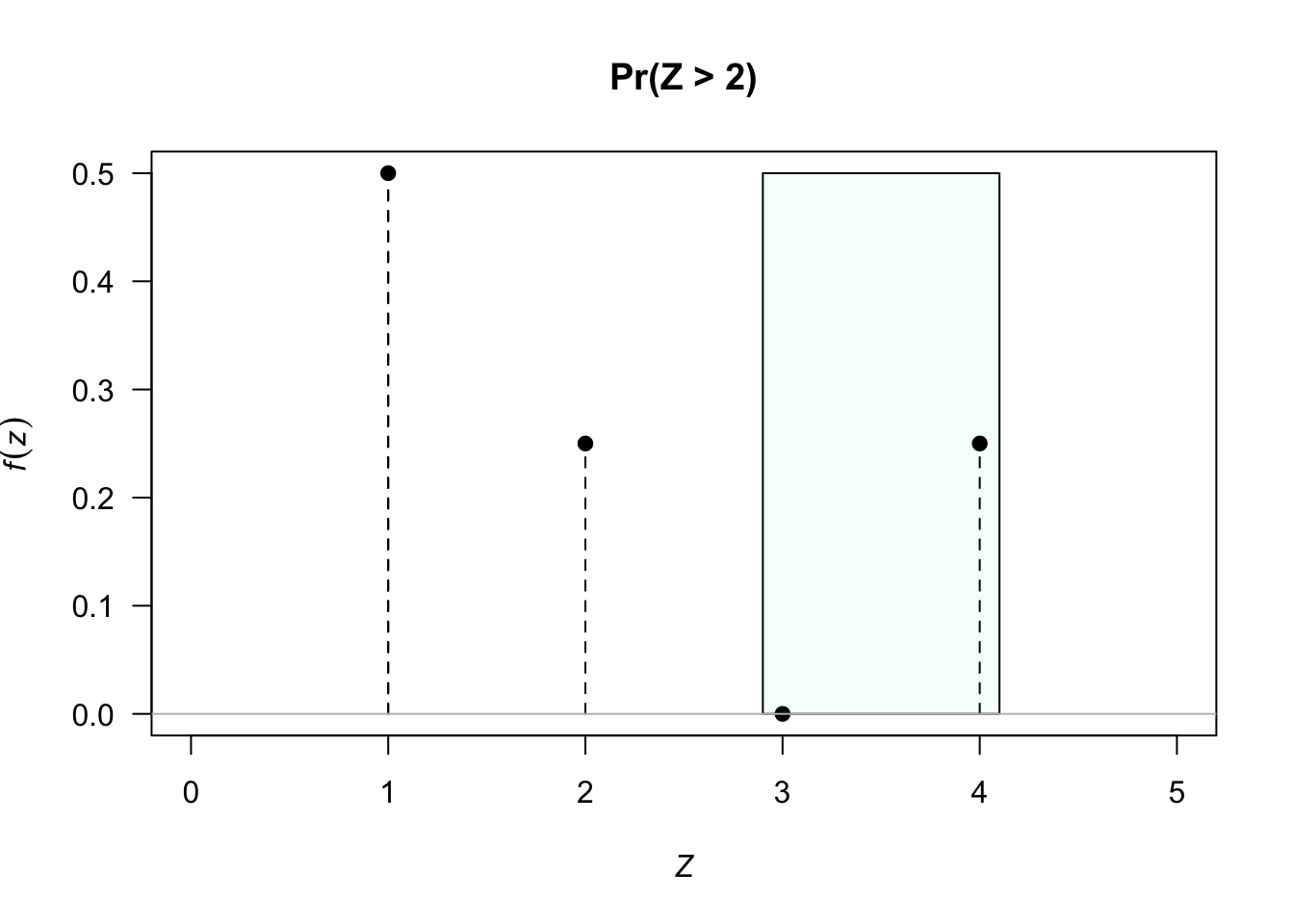2.2 Probability functions for discrete random variables
For discrete random variables, the probability function is called a probability mass function (PMF).
Example 2.4 (Discrete uniform distribution) A rv \(X\) has the uniform discrete distribution defined from \(a\) to \(b\) if the PMF is \[ f_X(x) = \left\{ \begin{array}{ll} \displaystyle \frac{1}{b-a+1} & \text{if $x = a, a+1, \dots, b$};\\[6pt] 0 & \text{otherwise}. \end{array} \right. \] This is usually written, for convenience, as \[ f_X(x) = \displaystyle \frac{1}{b-a+1}\quad \text{for $x=a, a+1, \dots, b$}. \]
A , say \(f(x)\), has two properties:
- \(\displaystyle \sum_{-\infty}^{\infty} f_X(x) = 1\); that is, the total probability is one (in other words, \(x\) certainly takes some value).
- \(f_X(x) \ge 0\) for all \(x\); that is, probabilities are non-negative.
Probabilities are found by summing over appropriate values.
Example 2.5 (Discrete uniform distribution) A rv \(X\) has the uniform discrete distribution defined from \(3\) to \(7\) inclusive if the PMF is \[ f_X(x) = \displaystyle \frac{1}{7-3+1} = \frac{1}{5} \quad\text{for $x=3, 4, 5, 6, 7$}. \] The probability that the rv \(X\) takes a value between \(5\) and \(7\) inclusive is \[ \Pr(5\le X\le 7) = \sum_{5}^{7} \frac{1}{5} = 0.6. \]
Example 2.6 (Discrete PMF) Consider a rv \(Z\) with PMF \[ f_Z(z) = \frac{|z - 3|}{4} \quad\text{for $z=1, 2, 3, 4$}. \] The probability that \(Z>2\) is \[ \Pr(Z>2) = \Pr(Z=3) + \Pr(Z=4) = \frac{|3-3|}{4} + \frac{|4-3|}{4} = 0.25; \] see Fig. 2.3.

FIGURE 2.3: The discrete distribution for \(Z\)